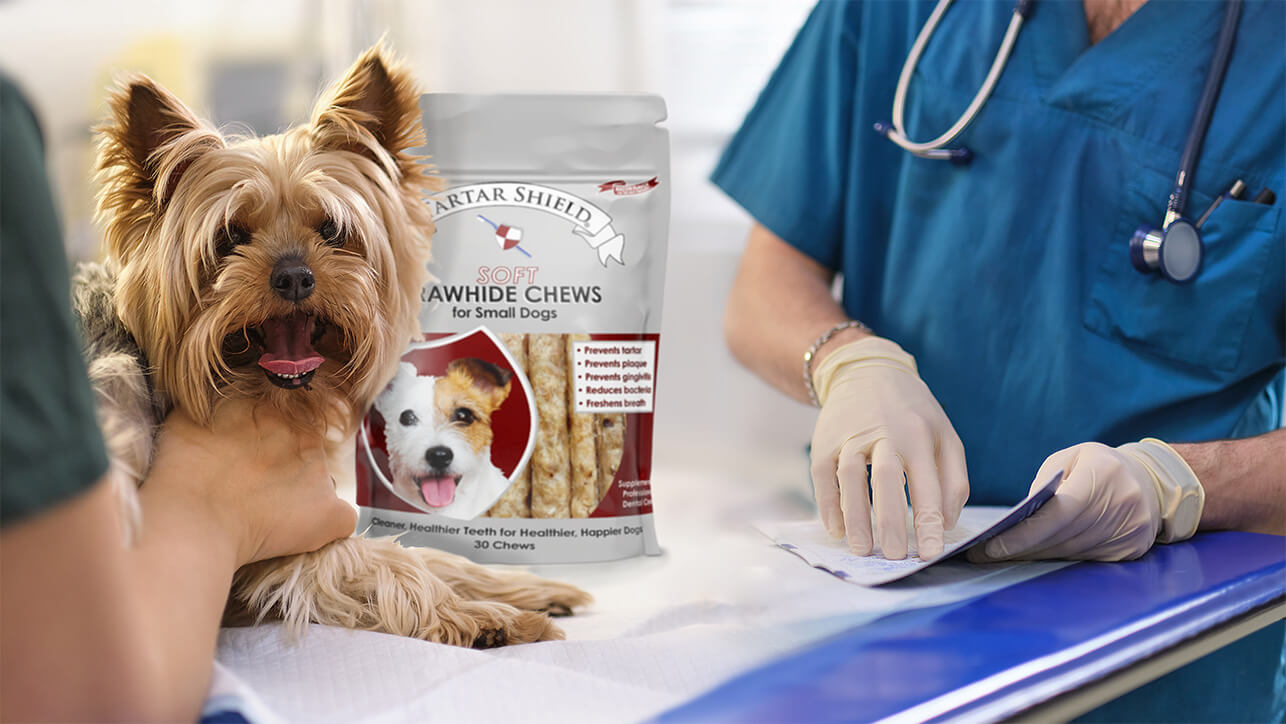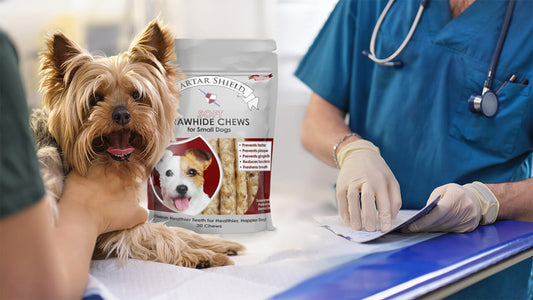Many of us might have spent December and January setting goals and making plans for the new year, but February is the time to turn our attention to our pets’ teeth and gums for National Pet Dental Health Month.
What is Pet Dental Health Month?
Established by the American Veterinary Medical Association (AVMA), National Pet Dental Health Month is celebrated every February as a way to bring awareness to the importance of dogs’ and cats’ oral health. While oral health is important all year long, National Pet Dental Health Month serves as a reminder to focus on this often-overlooked aspect of pet healthcare.
What do I need to know about my pet’s dental health?
Dental disease is one of the most common diseases in dogs and cats. In fact, more than 80% of pets will have some sort of dental disease by the time they are three years old.
The most common dental problem is plaque, a sticky film of bacteria that forms on teeth. Left untreated, plaque can harden into tartar buildup and lead to bad breath, tooth decay, and gum disease, also known as periodontal disease. Dental problems can reach beyond the mouth, too. Periodontal disease can lead to major health issues such as heart, lung, and kidney disease. On the other hand, proper dental care is linked to longer, healthier lives in both dogs and cats.
Pet parents should be aware of the common signs indicating something is wrong: excessive drooling, oral bleeding, swollen gums, dropping food, chewing on only one side, pawing at the mouth, decreased appetite, and behavioral changes. Still, not all pets exhibit these symptoms, and it can be hard to tell if our pet is in pain. Smaller dental problems can be easy to miss but can quickly snowball into larger problems, so when it comes to dental disease, prevention is key.
How can I prevent dental disease in my pet?
If you’re turning your attention to your dog or cat’s oral health for the first time (or the first time since last February!), it can be hard to know where to start. Here are four ways to get on track with your pet’s dental health.
Ways to prevent dental disease
1: Start a toothbrushing routine.
While it’s recommended to brush your pet’s teeth on a regular basis (at least three times a week for best results), only about 7% of pet parents actually do. Now is a great time to learn how to brush your pet’s teeth and establish a regular brushing routine. Whether you have a family friend or a senior dog or cat, learn how to brush your pet teeth with our 6 Simple Steps to Cleaner, Healthier Teeth guide!
2: Connect with your vet.
Your pet’s teeth and gums should be checked at least once a year by your veterinarian, often at the annual visit. This is also a great time to ask about your home dental care routine, and if a professional dental cleaning is recommended.
Searching for a new vet? Check our What to consider when choosing a new vet?
3: Evaluate your pet’s food.
Dry food can help remove plaque during chewing and is better for your pet’s teeth than wet or canned food. Make sure you’re feeding high-quality food, and consider topping your pet’s food with Tartar Shield Sprinkles, proven to clean teeth, reduce bacteria, and help prevent plaque and tartar buildup.
4: Incorporate a daily dental treat.
The act of chewing is great for your pet’s teeth by scraping plaque off the surface. Some dental treats—including those by Tartar Shield Pet Products—also include additives that actually help remove bacteria and prevent plaque and tartar from forming. Try Tartar Shield cat treats, dog biscuits, or soft rawhide chews to help give your cat or dog the best chance for a healthy mouth and long, happy life.



